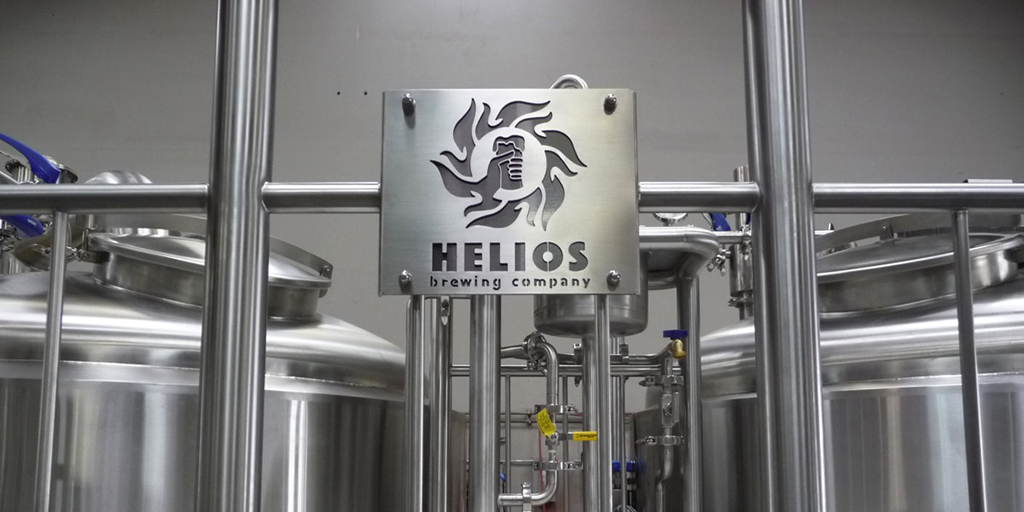The key to greener breweries: measurement May 2020

With consumers increasingly focusing on the sustainability credentials of businesses they deal with, breweries are looking to move towards being cleaner and greener. But there are other benefits too.
The first step to become more efficient and sustainable is to quantify says environmental scientist-turned-brewery owner Scott Shomer.
“Do an audit. Audit your own systems. Go around, look at the operation of your business, measure what you use and generate,” Scott said.
“Until you do that, you can’t figure out where the water’s going, where the waste is being produced.
“It doesn’t matter the size of the brewery, if you start walking around yourself, as soon as you start measuring it, then it becomes real.”
He cites the example of Brisbane’s 2007 drought when the city started tracking water usage and printing it in a graph on water bills.
“The city told us ‘here’s what you’re using, and here’s what the average family’s using’,” he said.
“And then everyone was starting to go out to their meter and they were checking it, and then it became real to them because it was easily measurable.”
Shomer left a career as an environmental consultant to co-found and run Brisbane’s Helios Brewery but still consults to the brewing industry through his business SolaBrew.
Not just greener, leaner too
He said while brewing can be resource intensive, there is a lot that can be done to lower consumption and make breweries greener. And many reasons to do it.
“We use a lot of water, we produce a lot of waste, use a lot of energy which many people haven’t been paying much attention to,” he said.
“But the price of water, power and gas are all going up. The market will force people to change.
“So now we’re looking at ourselves and saying, ‘okay, are we going to change? And if so, why?’
“Is it to be green? Is it to be sustainable? Or is it to save $1,000 bucks a month on our electricity?”
Shomer explained that most people ask how much it costs to make a brewery greener, but that is the wrong question to ask.
“What does it cost me not to be?” he said. “Nobody asks that question.”
“How much would my power bills go up next year if I didn’t do something? Nobody asks that.”
Novel solar solution
Shomer, who named his brewery after the personification of the sun, said one of his biggest savings came from a solar-thermal system that heats its brewing water.
The ‘super high-efficiency’ water heater was designed for much colder, darker climates than Brisbane and had to be slightly modified for Brisbane’s subtropical conditions.
Through a combination of the high-efficiency solar heater and the use of water that has been pre-heated through the brewery’s heat exchanger, Shomer says he is able to heat up water quickly and far more efficiently than the typical heated hot-liquor tank.
“Why would I send 20-degree tap water up to the roof, when I’ve got 60 or 70 degree water at the ready from our heat-exchange from the previous brew?
“It’s all filtered, it’s already been preheated during a ‘waste process’, and so in the summer, quite literally, I can heat about 1,000 liters of water to 90-plus degrees in about 2 minutes.”
The clever use of the system brings massive efficiencies.
“That hot water system reduces the power needs such that the only power my mash tun draws is for the light and for the little mash rakes,” he said.
“We don’t have to come in early, fire up the boiler, get the kettle up to temperature, heat up the hot liquor tank.
“You’re talking about hours of throwing therms at something. We actually cool water heated by the sun down with tap water to mash in.”
At what cost?
Costs are obviously a consideration.
“The system cost me $15,000, of which I got $5,000 back from the Commonwealth Government,” Scott explained.
“That system paid for itself in under a year. It takes 40 per cent of the energy needs off brew day.”
Scott said that the best comparison he has is when he hosts brewers who ask him about his power bills.
“I recently had one who was paying $15,000 per quarter. Mine is $1,000.”
In the end Scott asks whether it really matters why businesses become greener and more sustainable.
“Cost is a huge driver with all businesses now and being sustainable can be both socially and fiscally advantageous,” he said.

